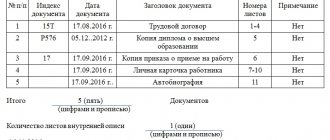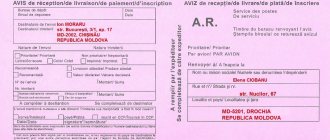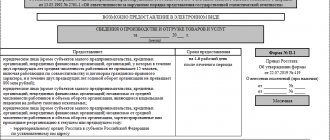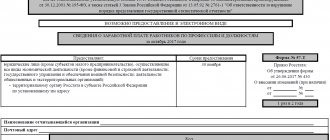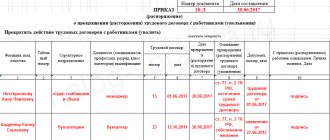What is an employee’s personal file?
The legislation states that the concept of “deed” means a special way of drawing up a document or a set of documents related to one issue or area of activity. In accordance with sub. 95 clause 3.2.2 GOST R 7.0.8-2013, these are documents placed in a personal file folder, that is, in a separate cover. There are no special regulations for maintaining (there are only for state and municipal employees). But if the company decides to conduct personal affairs, it will have to approve regulations on the conduct of personal affairs and regulate this process at the enterprise level. This internal regulation defines:
- what papers will be stored (composition) and for what purpose;
- order of conduct;
- list of employees for whom LD will be issued;
- procedure for access to information;
- terms and storage conditions;
- features of archiving or destruction after dismissal.
In addition, the company appoints an employee who is responsible for this process.
Appearance of the document and description of its fields
When compiling personal files of employees, it is necessary to use several regulations:
- Labor Code of the Russian Federation. Chapter 14 contains all the main provisions.
- Federal Law No. 152 of July 27, 2006 “On Personal Data”.
- Federal Law No. 125 of October 22, 2004 “On archiving in the Russian Federation.”
In addition, it is recommended to use the Order of the Ministry of Culture, issued on August 25, 2010 No. 558. It approves a list of standard management documents that are formed (formed) in the process of work of state bodies and local self-government services.
When creating employee IDs, it is important to realize that this folder contains personal (personal) data. And the employer is obliged to preserve and protect them. That is, do not allow leakage to unscrupulous persons for unauthorized use. Accordingly, all documents in the employee’s personal file are under the strict supervision of the responsible person.
The concept of “personal matter” is defined by GOST P (7.08-2013). According to the entry, a case is a document or a set of several documents contained in a separate cover. Therefore, the appearance of the LD must comply with GOST.
In simple words, a personal file is a folder or cover with documents attached to it, pages containing information about the employee, his activities, merits, length of service, etc. from acceptance to a position until termination of activity. And when a person moves to work in another organization, the LD moves with him.
Personal affairs are managed by a personnel employee. A separate folder is kept for each worker. And only in one copy. Information in the LD is placed in chronological order. If copies of the employee’s personal documents are attached to the case, they are certified in the appropriate manner. Any materials related to work activities are included in the personal file.
Records of any changes - personal, biographical - are made in the file. Incoming materials are attached to it, that is, everything is recorded in the case: issuance, withdrawal of information, changes, etc.
The state of affairs of the organization's staff is periodically checked. If necessary, close and transfer to the archives department. Each folder must be accounted for and registered. An appropriate log is kept for this purpose.
The personal file field is usually not used. Since everything you need is included in the folder ready-made. Each document is on its own sheet.
What documents are included in the case?
The employer usually has at his disposal both the originals of employee documents (forms, registration cards) and their copies. When creating an employee’s personal file in 2022, both are included in the folder. It should be remembered that copies of documents must be certified in the prescribed manner in the proper manner (for state employees, copies of passports are mandatory in the LD, for other categories of employees this issue is resolved at the company level). Documents in LD are divided into:
- formed at the time a person gets a job;
- arising in the course of work in the company;
- documents on dismissal from a specific company.
The first group includes:
- a certificate of the presence (absence) of a criminal record (when applying for a job, the implementation of which is not allowed for persons with a criminal record or who have been subject to criminal prosecution);
- certificate of completion of a medical examination (for employment in cases provided for by the Labor Code of the Russian Federation) and a medical book;
- employment contract (employer's original);
- The order of acceptance to work.
In the second group - an agreement on financial responsibility, a copy of the job description, additional agreements to the employment contract (if concluded), orders for transfers, appointments, incentives or penalties. This includes information about undergoing periodic medical examinations, information about advanced training or training, and a signature on non-disclosure of trade secrets. Here, if necessary, the following are stored:
- copies of applications and orders for granting leave;
- explanatory notes;
- office notes;
- various acts and notifications.
The third and final group includes the employee’s statement and the organization’s order for dismissal.
Content
In order to competently form and maintain an employee’s personal file, you need to know which documents should be attached to the folder and which should not. We'll talk about this further.
The first page of the LD is the title page. It must be drawn up according to the rules provided for internal organizational documentation. The sample is usually available to the personnel officer in the program. Or you can take it on the Internet.
At the top, in the middle of the title page, the name of the labor organization in which the person is employed is indicated. The name must be complete. The name of the document is written below: “Personal file No...”, with the obligatory assignment of a number. The person's full name is written under the name. There is no need to decline your name.
At the bottom, under the name, the date the case was opened is indicated. And a separate column is printed for the end date, which is entered on the day the case is closed. The number of sheets is indicated in the lower right corner: “Case contains 30 sheets.” The shelf life is indicated even lower.
We should not forget about the internal inventory, which is formed simultaneously with the case. An inventory of the employee’s personal file is necessary to record documents during storage. A special form has been introduced for the inventory. It is approved by Appendix No. 10 to the basic rules for the work of archives. The inventory must be completed throughout the entire period of business.
The LD must contain the following information about the employee:
- Questionnaire: full name, address, marital status, number of children.
- Summary.
- Recommendation and characterizing information from previous jobs (if available);
- Copies of documents: passport, INN, SNILS, document on education, profession and qualifications, military registration, etc. That is, all the documents that a person should have in hand are inserted into the LD in copies;
- Various types of certificates: about a criminal record (its presence or absence), about the fact of criminal prosecution, if such occurred in the biography of the job applicant. All medical certificates are also attached to the folder as they are received. For example, after sick leave, injury, etc.
What to pay attention to
To properly process employees’ personal files in 2022, several key points should be taken into account. The first and main thing is to determine what to include in the LD and for what purpose the documents are included there. A lot of personnel documents are generated. If you set the goal of formalizing a person’s entire life during the period of his work in an organization, then personal files become multi-volume in terms of one employee. This complicates the work, and there is no point.
When dealing with personal matters, it is very important to remember that the processing of personal data must be limited to achieving specific, pre-defined and legitimate purposes. Processing of personal data that is incompatible with the purposes of collecting this information is not permitted (clause 2 of Article 5 152-FZ of July 27, 2006 “On Personal Data”).
If you ask personnel officers about keeping a copy of a passport in an employee’s personal file, many will answer that this is how it’s supposed to be, but they won’t be able to refer to the norm (apparently, they heard or read somewhere that a copy of the passport must be present in the personal file, or they sewed it in just to was just in case). Meanwhile, the resolution of the Federal Antimonopoly Service of the North Caucasus District in case No. A53-13327/2013 dated April 21, 2014 directly requires the need for the employer to preserve copies of employee passports to be argued. Only in cases of justifiable need is this storage recognized as legal. It’s the same with job applications, which are mandatory for the civil service, but for other organizations they have long been an element of the past: now this document is not needed for employment.
The second point that you should pay attention to is the storage of LD, personal T-2 cards and work books.
Work books are kept as strict reporting forms - in safes, and access to them is available to a limited circle of persons (Order of the Ministry of Labor No. 320n dated May 19, 2021). Some organizations also keep personal files in metal cabinets. But these documents should not be in the same safe, which excludes the possibility of storing work books in personal files.
Now about the possibility of storing T-2 cards in personal files: T-2 cards are always stored separately, since they are military registration documents.
ConsultantPlus experts examined how to manage personal files of employees without violating the Personal Data Law. Use these instructions for free.
Why are personal files necessary?
In the course of work, various kinds of decisions regarding personnel management regularly appear. And all information about the employee is taken from his personal file. Therefore, files with information are necessary for management in the first place. To manage the staff systematically and effectively. After all, enterprise managers must have a complete understanding of what kind of people work in the organization, what their merits are, problems with illnesses, etc.
In addition, there are often situations when a request is received from government services for a specific employee. In such situations, a personal file allows you to quickly respond and provide the required information.
Personal files are also created for the purpose of systematizing information and maintaining order in enterprises.
How long to store a file?
Documents that have different shelf life are usually placed in LD. Personnel officers should be guided by the Order of the Federal Archive No. 236 dated December 20, 2019, which established all the storage periods for documents. Personal files of employees are stored from 50 to 75 years (clause 445 of Rosarkhiv Order No. 236).
The procedure for maintaining LD is determined at the company level. Usually all papers are placed in it in chronological order. And so that nothing is lost, an inventory is sewn in, which is maintained all the time, and a certificate is filled out about the composition of the documents included in the employee’s personal file. The inventory form is developed independently or a sample is used for government agencies.
Why do you need an internal inventory in your personal file and is it mandatory?
There is nothing legally required to maintain an inventory of documents in the personal file of an employee (employee). Thus, the inventory is not mandatory, but in the rules for the work of the archive, the inventory is mandatory for government organizations, for all others it is advisory.
For correct record keeping in the HR department, all papers in the personal file of one employee in the employee’s personal file (folder) are stapled together in chronological order. In this regard, organizations independently determine the procedure for maintaining an employee’s personal file and fix it, at their discretion, either in the accounting policy of the enterprise, or an internal local regulation is issued on the procedure for maintaining records in the personnel department.
An inventory in an employee’s personal file allows you to:
- it is easy and simple to control the document flow regarding the identity of this employee;
- protect against unauthorized use of information about a company employee and his relatives (children, spouse; parents, brothers/sisters).
It is most convenient to begin creating an inventory of an employee’s personal file when the employee starts work. In rare cases, it is formed when the case goes into the archives.
How to design a title page
The first thing to fill out in a personal file is the title page. The organization itself approves the form of the title page of the personal file or uses the one approved by the higher department. If you are developing the form of the title page yourself, take as a basis the form from Appendix No. 6 of Rostechnadzor Order No. 372 of May 30, 2008.
On the title page they write the company name, personal file number and full name. employee. After filling out the title page, all other documents are placed in the folder.
All opened personal files must be registered in a special accounting journal - this is convenient for searching. The form of this accounting document is not approved by any legal acts, so the employer develops it independently. The journal is stitched and numbered, and all LD numbers, dates of establishment, headings and closing dates are entered in its columns.
Here is an example of how to register an employee’s personal file in 2022:
Features of compilation
In all areas, both commercial and budgetary, personal files are maintained for all employees without exception. In some cases, the organization provides for selective maintenance of LD. That is, for certain employees. For example, only those responsible financially or heads of departments.
Employees of the HR department prepare, maintain and store documentation. This responsibility is assigned to them by the manager with the appropriate order.
The list of employees who are allowed access to the LD is required for approval. Such employees are authorized to familiarize themselves with the contents of the document, receive the file in their hands, in order to perform any work.
Changes in personal files are recorded as they occur. To do this, you do not need to wait for an order from management, as for other internal documents. Since a personal file is a kind of “repository” of chronological information, all changes are applied in the usual manner, but included in the inventory.
LDs begin to be formed after a person is hired. The first documents placed in the folder are personal information - questionnaires. After creating the document, the folder must be stitched and registered.
An integral part of the folder is the certification sheet. It is created separately. A sheet is needed to number the documentation included in the case. On the certification sheet, the condition of the pages is recorded, and the specifics for filling out individual sheets are prescribed.
